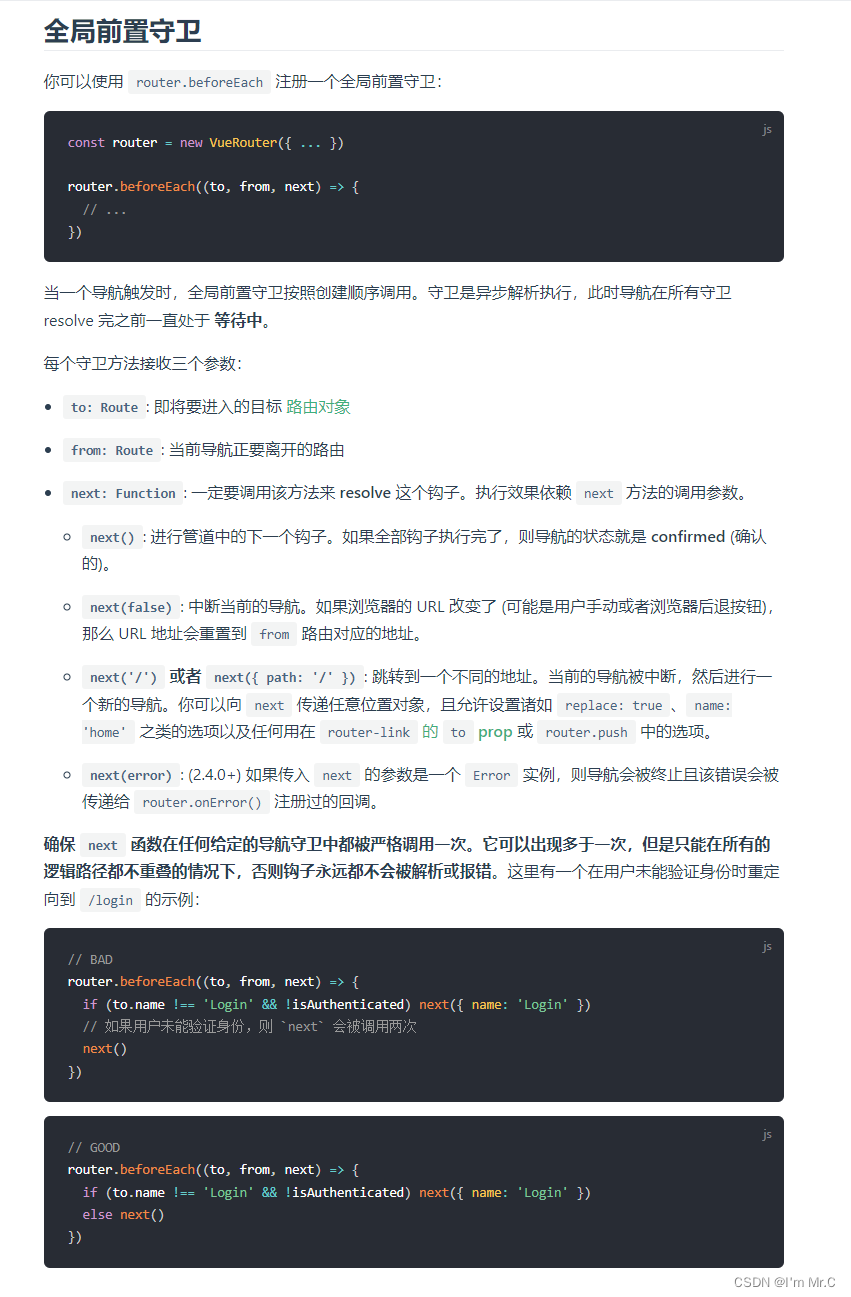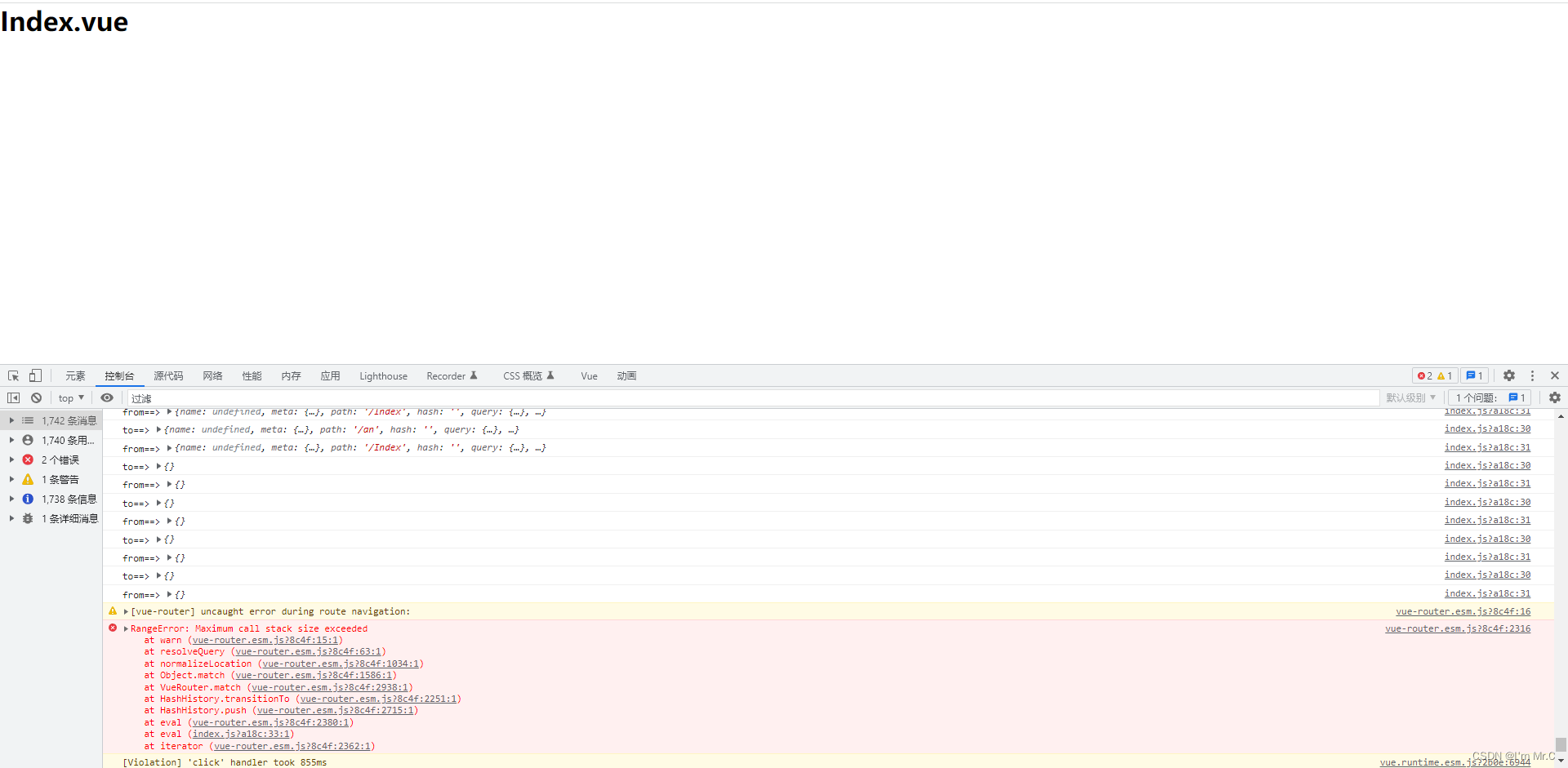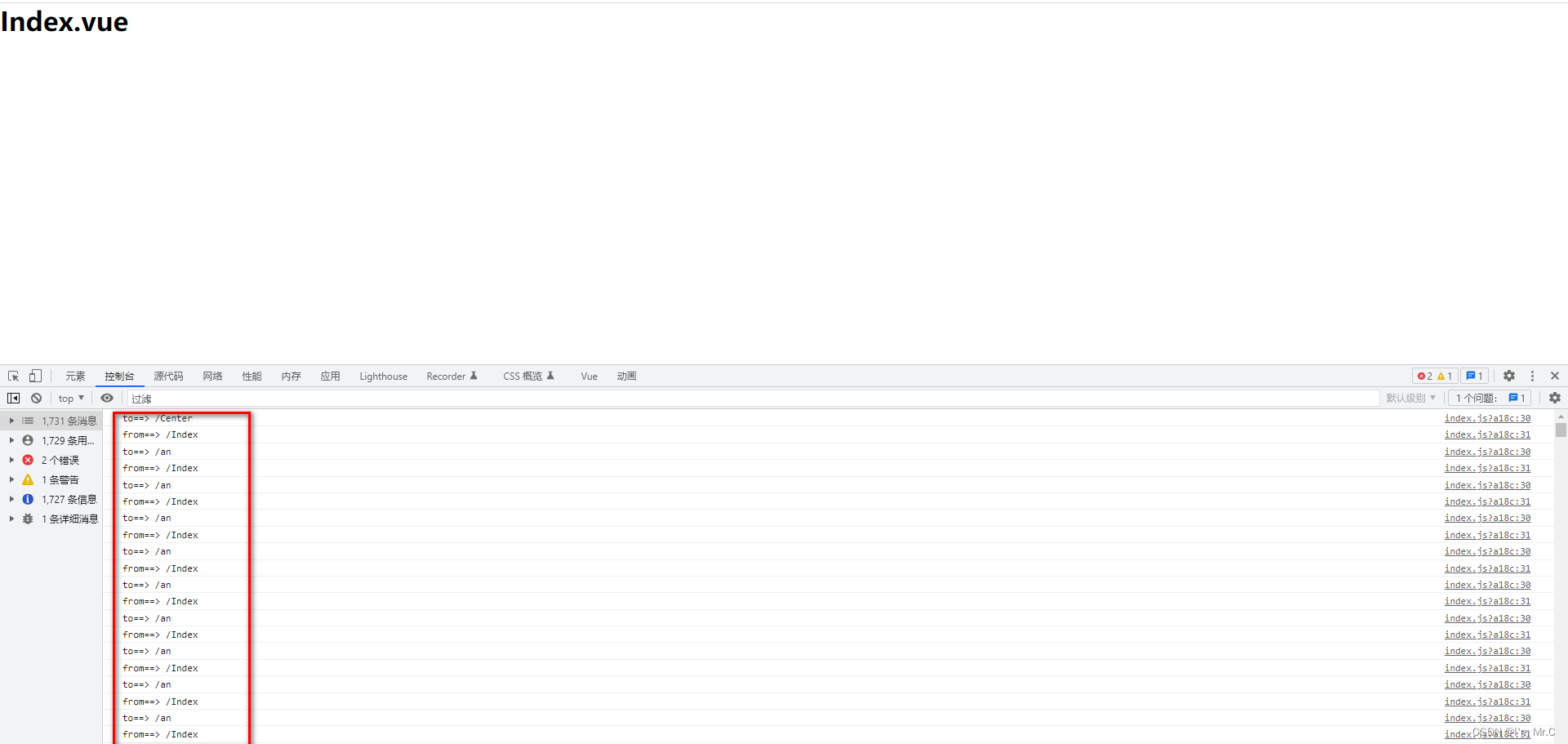-
熟悉Vue路由的beforeEach陷入死循环的情况
Vue的全局路由分为全局前置路由与全局后置路由
官方对前置路由守卫的介绍

不了解路由守卫的next很容易让页面陷入死循环。以全局前置路由为例,陷入路由死循环一般报错是堆栈溢出也就是:RangeError: Maximum call stack size exceeded
router.js
import Vue from 'vue' import VueRouter from 'vue-router' Vue.use(VueRouter) const routes = [ { path:"/", redirect:"/Index" }, { path:"/Index", component:()=>import('@/views/Index.vue') }, { path:"/Center", component:()=>import('@/views/Center.vue') }, { path:"/an", component:()=>import('@/views/an.vue') } ] const router = new VueRouter({ routes }) router.beforeEach((to,from,next)=>{ console.log("to==>",to); console.log("from==>",from); if(from.path=='/Index'){ next('/an') }else{ next(); } }) export default router- 1
- 2
- 3
- 4
- 5
- 6
- 7
- 8
- 9
- 10
- 11
- 12
- 13
- 14
- 15
- 16
- 17
- 18
- 19
- 20
- 21
- 22
- 23
- 24
- 25
- 26
- 27
- 28
- 29
- 30
- 31
- 32
- 33
- 34
- 35
- 36
- 37
- 38
- 39
当从Index.vue离开时就会陷入死循环。

要清楚前置路由陷入死循环的原因,就要明白前置路由守卫的next函数next函数与beforeEach前置守卫是互相调用的有个过程。
next(‘/’)执行完成后就会执行beforeEach路由守卫router.beforeEach((to,from,next)=>{ console.log("to==>",to.path); console.log("from==>",from.path); if(from.path=='/Index'){ next('/an') }else{ next(); } })- 1
- 2
- 3
- 4
- 5
- 6
- 7
- 8
- 9

流程解析:刚开始的时候 目标路由是/Center,来源路由是/Index,执行前置路由守卫,判断到if为true,于是执行next(‘/an’),目标路由改成了/an,但来源路由仍然是/Index,next执行完成后再次执行beforeEach,beforeEach的判断再次为true,再次执行next(‘/an’),目标路由改成/an,来源路由仍然没变,因为next执行完成后再次执行beforeEach,于是就陷入了死循环。
如果要判断to.path陷入死循环,只需要to.path的值等于next的入参。router.beforeEach((to,from,next)=>{ console.log("to==>",to.path); console.log("from==>",from.path); if(to.path=='/Index'){ next('/Index') }else{ next(); } })- 1
- 2
- 3
- 4
- 5
- 6
- 7
- 8
- 9
-
相关阅读:
Java—基础知识测试总结1
为什么解决文档管理问题的数字化战略能够推动盈利增长
【LangChain学习之旅】—(11) 记忆:通过Memory记住用户上次的对话细节
华为OD机试真题 Java 实现【矩阵元素的边界值】【2023 B卷 100分】,附详细解题思路
Python面试1-50题汇总,都是常问的面试题!
Java学习路线图
前端下载文件重命名
springboot中如何同时操作同一功能
BPF 调度器 sched_ext 实现机制、调度流程及样例
[附源码]计算机毕业设计基于springboot架构的博客平台设计
- 原文地址:https://blog.csdn.net/qq_44849271/article/details/125565601
